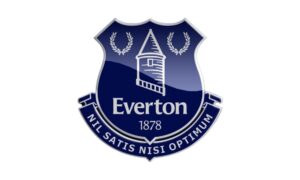In the game of football, a formation defines the positions on the pitch that each player from a team takes up. The position of a player in a formation does not necessarily define the role of a player, other than attacking or defensive, as the modern game is extremely fast and fluid.
A formation can be penned on a paper with a total of 11 players (however a goalkeeper does not have any effect on the formation based on positioning). The choice of the formation is made by a team manager or head coach. Formations can depend on the opponent or on the number of players available to the manager on the given day.
A number of formations are implemented in modern-day football, defined by each team’s tactics and style of play. In this article, I will bring out the advantages and disadvantages of some formations, without trying to bring any relations to any team’s style of play this season (2020-21 season).
4-4-2 Football Formation:
The 4-4-2 formation was used most commonly in the 1990s and early 2000s. Both the central midfielders are expected to be extremely hard working and are expected to support both the defense and the attack. The wide midfielders are expected to go to the by-line and assist in attacks, as well as protect the full-backs in the defensive phase. Teams who have gone on to win European titles with this formation are AC Milan (Late 1980s) and Manchester United (1998-99).
Advantages:
- Statistically covers the most pitch area while out of possession.
- Offers good balance in both in possession and out of possession phases.
- Extremely solid structure for teams to remain compact when out of possession.
- Offers natural width when the ball is in possession.
- Adept for vertically in attacking transitions.
Disadvantages:
- Can be outnumbered in central midfield when coming up against opposition with a 3 man midfield.
- Midfielders are given too much responsibility in possession and out of possession phases.
- Lack of passing angles.
- Spaces may open up for the opposition if the team is not compact. Defenders will have to make more decisions.
- Attacking patterns become predictable.
4-2-3-1 Football Formation:
The 4-2-3-1 formation is the most common formation in world football today. The use of inside forwards, wing-backs, a no. 10, and a double pivot make this formation the most modern formation in the world today as all positions include that of modern-day roles of players in those respective positions. Teams who have gone on to win European titles with this formation are Inter Milan (2009-10) and Chelsea (2011-12).
Advantages:
- Solid spine with 2 holding midfielders and 2 central defenders creating a box.
- Fullbacks are granted full attacking freedom as the holding midfielders are there to cover the spaces.
- 4 attackers to allow flexibility and positional rotation in the possession phase.
- Allowance of creativity in the back while there is defensive assurance while in possession phase.
- Creation of triangles in the middle and out wide.
Disadvantages:
- There may be a disconnect between the front 6 and back 4 in transition.
- Fullbacks need to be disciplined as not to be caught out in transition.
- Creativity solely depends on the front 4 if holding midfielders do not play a part in the attack.
- No option in the penalty box if the striker drifts out wide.
- The striker may be isolated from the rest of the team if the attacking 3 are pinned back out of possession.
- At least 1 of the 2 central defenders need to be quick in order to sweep the ball in transitions.
4-2-2-2 Football Formation:
This formation was first used by France in the 1982 World Cup and Euro 1984. This formation is usually defined as the ‘Magic Rectangle’ or ‘Magic Square’. This formation can adapt into a 4-2-4 in attack or a possible 3-4-3 if a wing-back pushes upwards and an advanced midfielder moves on to the wing. This formation was notably used by Brazil in the 1998 Fifa World Cup Final.
Advantages:
- Natural overloads in central midfield, both in possession and out of possession.
- Many vertical progressive options.
- Positional freedom for the 2 attacking midfielders while in possession.
- Overloading the midfield will force the opposition to attack down the wings.
- If fullbacks are attacking, the opposition backline can be stretched by 6 players.
Disadvantages:
- Big responsibility on the wing-backs to provide width in attack
- The opposition can overload the wide areas.
- Lack of attacking discipline for defensive midfielders, a great amount of discipline is required.
- Tendency to become narrow in possession, not stretching the opposition horizontally.
- Wing-backs can be caught out during transition, with defensive midfielders defending the central space.
4-3-3 Formation:
This formation is the most common formation in modern football. Used by Mourinho’s Chelsea in 2005 while everyone else was mostly using the 4-4-2 formation, gave them an advantage. Having a third man in midfield gave Chelsea more control as there was an extra man in midfield. This formation was mastered by Pep Guardiola’s 2008-2009 Barcelona when they won six titles in one year, the most for any club in history. A number of teams have won European and World titles with this formation, such as Barcelona(2008-2009), Real Madrid(2015-16, 2016-17, 2017-18), Liverpool(2018-19), France (2018 Fifa World Cup), Italy (2006 Fifa World Cup).
Advantages:
- A holding no. 6 allows more attacking freedom of fullbacks.
- Flexibility in off-ball positional rotations.
- Fluidity in system changes (4-1-4-1, 4-5-1).
- The natural creation of passing angles and offensive triangles.
- 3 attacking players can pin opposition fullbacks.
- 3 central midfielders enable the team to dominate the midfield and control central areas.
Disadvantages:
- The lone striker can be isolated.
- Lack of options in opposition penalty area if wingers stay wide and attacking midfielders do not enter the 18 yard box.
- Vulnerability in defensive transitions if the no. 6 is pulled out of position.
- Concede space on the wings if wide players are not disciplined when out of possession.
- Complex decision-making required by midfield trio.
4-4-2 Diamond Formation:
This formation jams the midfield but exposes the wings. The fullbacks need to be one of the main sources of attack. Usually, a deep-lying playmaker is used as the no. 6 for progressing play. However, the 6 must be disciplined to screen the backline from the opposition’s attacking transitions. The most famous team to use this formation and win a European title was Carlo Ancelotti’s AC Milan in the 2002-03 season.
Advantages:
- Flexibility for outside midfielders to play narrow or wide.
- When facing 4-man backlines, the 2 forwards can occupy the central defenders and create space between the lines for the attacking midfielder.
- The midfield will always create an overload in and out of possession.
- Creates positive vertical options during an attacking transition.
- Natural angles in the midfield for holding possession.
Disadvantages:
- Vulnerable to attacks down the wings.
- Requires full-backs who are capable of getting up and down the wing to support the attack and defence.
- Possibility of creation of space in the midfield if the outside midfielders cover the fullbacks when in the attack.
- Lack of natural width in possession.
- Difficult to create overload in the wings while in possession.
- The holding midfielder must be extremely disciplined to protect the backline at all times.
3-4-3 Formation:
This formation is used by more offensive-minded teams. Usually, the 4 man midfield consists of 2 wing-backs. The 3 forwards are expected to be fully focused on attacking. This formation is more vulnerable to attacks as compared to a 4-5-1 or a flat 4-4-2. Rafa Benitez’s Liverpool used this formation in the final to win the Champions League in the 2004-05 season.
Advantages:
- Using both wingers and wing-backs to create overloads in wide positions.
- Flexibility in formation when losing possession to a 5-4-1
- Wingers are given the freedom to attack with the wing-backs providing width and the striker remaining central.
- The front 5 provide a good opportunity for counter-pressing.
- Central Defenders can enter the midfield in possession to break through the lines.
Disadvantages:
- Central defenders are required to be comfortable on the ball and can progress the ball by passing
- Prone to counter attacks when the wing-backs are supporting the attack.
- An opposition midfield 3 can create an under load leading to loss of control in midfield.
- Wing-backs should be comfortable in attack and defence and should be alert during transitions.
- The front 3 can be too close leading to similar movement and losing the ball frequently.
3-3-3-1 Formation:
This formation is very attacking in nature and at first sight of the formation, it is meant for ball possession and midfield domination. To use this formation, a team requires technical players. This formation has been used recently by Julian Nagelsmann’s RB Leipzig.
Advantages:
- Creates maximum amount of triangles in the midfield, creating passing options.
- Flexibility in a 3 or 5 man backline hen out of possession.
- 3 lines of 3 can be compact or provide a width and can manipulate opposition defensive structures.
- Flexibility in attacking centrally or through wide areas, as all 3 lines of 3 can overload the wings.
- Players can occupy half-spaces, making opposition decision making difficult with regard to passing and breaking the press.
Disadvantages :
- The structure is defined as a possession-styled attack. The players must be extremely technical and must make smart decisions off the ball.
- All players must be extremely versatile, to facilitate constant movement between central and wide areas.
- Difficulty in transitioning from an in possession shape to an out of possession shape.
- High level of discipline required for the front 3 to support the defence.
This article is written by Football Express writer Kyle Mendonca(mendoncakyle4@gmail.com).








